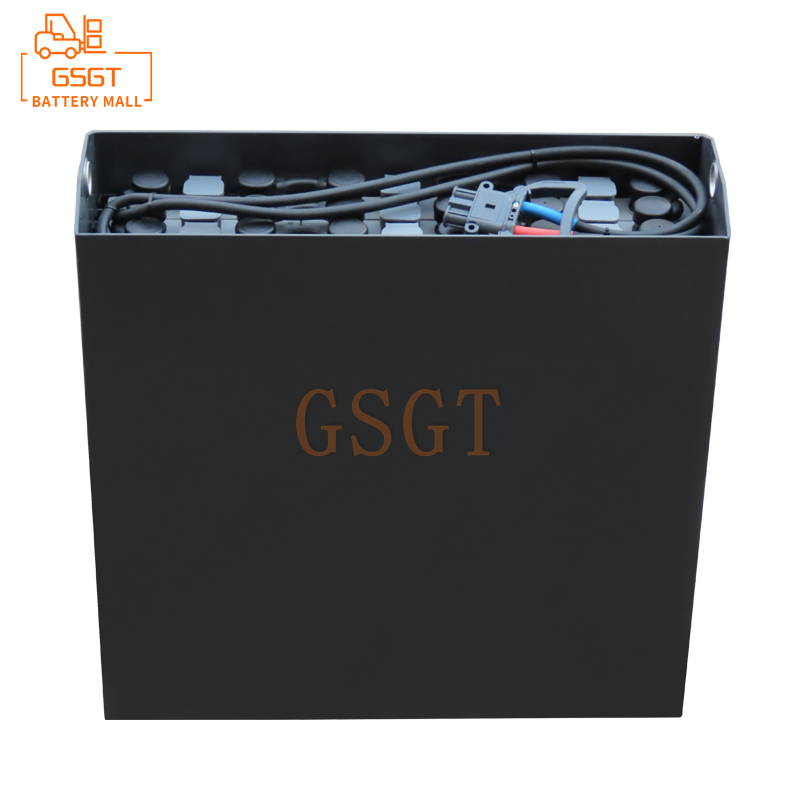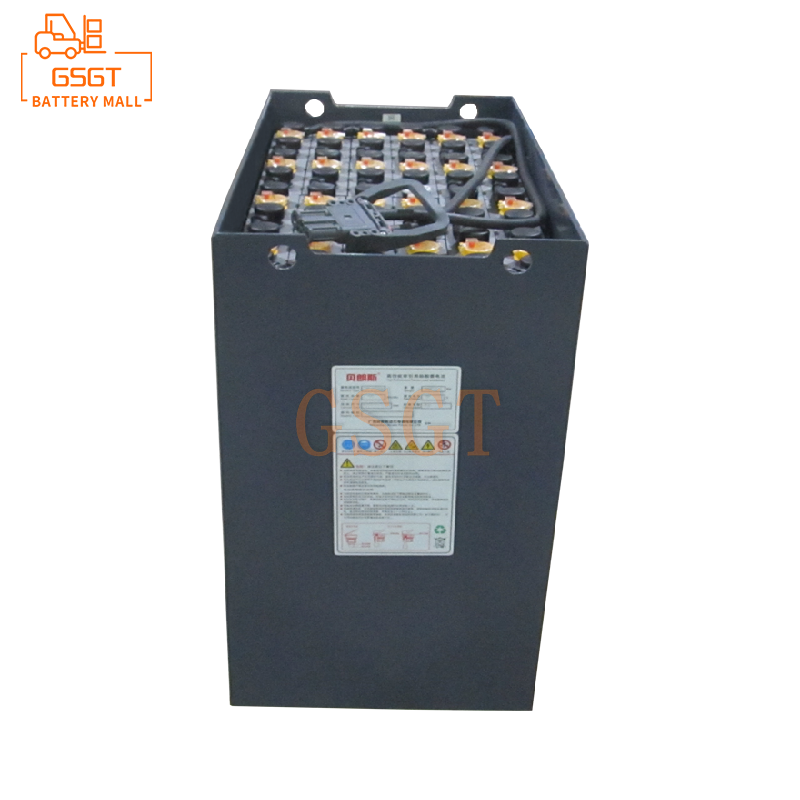Time:2025-07-22 10:30:45
Browse:611
During the operation of forklifts, lead-acid batteries act like the "heart", providing continuous power for the forklifts. The durability of its performance is directly related to the working efficiency and usage cost of the forklift. Therefore, mastering the correct maintenance methods is crucial for extending the service life of forklift lead-acid batteries and maintaining their good performance.
Ⅰ. Daily Inspection: Timely identify potential problems
Daily inspection of lead-acid batteries in forklifts is a fundamental task to ensure their long-lasting performance. Regular inspections can help identify problems with the battery in a timely manner, providing a basis for subsequent maintenance and upkeep.
1. Visual inspection
Before using the forklift every day, the appearance of the battery should be carefully inspected. Check if the casing is damaged or deformed. If the casing is found to be cracked, the electrolyte may leak, which not only corrodes the surrounding components but also leads to a decrease in the battery's capacity. At the same time, it is necessary to check whether the surface of the battery is clean. If there is dust, oil stains, etc., it should be wiped clean with a dry cloth to prevent leakage.
2. Battery level check
The battery power can be checked through the built-in electricity meter of the forklift, or it can be measured with a dedicated voltmeter. After the forklift has completed its operation, if the battery level drops below 20%, it should be charged in time to prevent excessive discharge of the battery. Excessive discharge will cause sulfation of the plates and shorten the lifespan of the battery.
3. Connection check
Check whether the connection between the positive and negative terminals of the battery and the cable is firm, and whether there is any loosening or oxidation. If an oxide layer is found on the terminals, it should be sanded clean with sandpaper and then Vaseline should be applied to prevent further oxidation. Loose connections will increase resistance, leading to insufficient charging and poor discharging, which affects the performance of the battery.
Ⅱ. Charging Maintenance: Scientific charging extends lifespan
The correct charging method is a key link to ensure the long-lasting performance of forklift lead-acid batteries. Incorrect charging operations will seriously affect the service life of the battery.
1. Charging environment
When charging, the forklift should be parked in a well-ventilated, dry and clean environment, away from fire sources and heat sources, and avoid direct sunlight. During the charging process, hydrogen and oxygen are produced. When exposed to open flames, an explosion may occur. High-temperature environments can also affect charging efficiency and battery performance.
2. Charging timing
When the battery power drops to 20%-30%, it should be charged in time to avoid over-discharge. Excessive discharge can cause sulfation of the plates, reducing the capacity of the battery and shortening its lifespan.
3. Charging operation
Before charging, make sure that the charger matches the specifications of the battery. When connecting the charger, first connect the output terminal of the charger to the positive and negative terminals of the battery, and then connect the input terminal of the charger to the power supply. During the charging process, closely monitor the working status of the charger and the temperature of the battery. If the battery temperature exceeds 45℃, stop charging immediately and resume only when the temperature drops to normal. After charging is complete, disconnect the power supply first, and then disconnect the charger from the battery.
Ⅲ. Storage Points: Even if not in use for a long time, it still needs care
When forklifts are out of use for a long time or the batteries need to be stored, the correct storage method can effectively prevent battery damage and maintain its performance.
1. Preparations before storage
Before storage, the battery should be fully charged to ensure that the battery level is above 80%. Then check the appearance of the battery. If there is any leakage of electrolyte, it needs to be repaired. At the same time, clean the surface of the battery, remove the cables on the terminals, and wrap the terminals with insulating sleeves to prevent short circuits.
2. Storage environment
Batteries should be stored in a well-ventilated, dry and cool place, avoiding direct sunlight and high-temperature environments. The temperature at the storage location should be controlled between 5℃ and 30℃, and the relative humidity should not exceed 75%. Do not place the battery together with metal items to prevent short circuits.
3. Regular maintenance
During storage, the battery should be recharged once every 1 to 2 months to ensure that the battery level remains above 80%. At the same time, check the appearance and voltage of the battery. If any abnormalities are found, they should be dealt with promptly.
Ⅳ. Frequently Asked Questions and Answers
Question: What should I do if the temperature is too high when charging the battery?
Answer: If the temperature of the battery is too high during charging, it may be caused by reasons such as mismatched charger specifications, excessively long charging time, or internal faults of the battery. First of all, charging should be stopped immediately. Check whether the charger matches the specifications of the battery. If not, a suitable charger should be replaced. Secondly, check if the charging time is too long. If it exceeds the specified time, stop charging. If the above methods still fail to solve the problem, it may be that there is a fault inside the battery. You should contact a professional in time for inspection or replacement.
Question: How should batteries that have not been used for a long time be stored?
Answer: Before storing a battery that has not been used for a long time, it is necessary to fully charge it to ensure that the battery level is above 80%. Then clean the surface of the battery, remove the cables, and wrap the terminals with insulating sleeves. The storage location should be well-ventilated, dry and cool, with a temperature ranging from 5℃ to 30℃ and a relative humidity not exceeding 75%. During storage, recharge once every 1 to 2 months, check the appearance and voltage, and deal with any abnormalities promptly.
Ⅴ. Summary
The maintenance of lead-acid batteries for forklifts is a meticulous and crucial task, as it directly affects the battery's performance and service life. Through daily inspections, scientific charging, correct storage and timely handling of common problems and other measures, the service life of the battery can be effectively extended, making its performance last longer, thereby improving the working efficiency of forklifts and reducing the operating costs of enterprises. Therefore, relevant staff should strictly follow the maintenance guidelines to operate and ensure that the lead-acid battery of the forklift is always in good working condition.

$3050

$1690

$1200

$2450

MESSAGE
Professional And Efficient
Security
Affordable Price
Professional Services